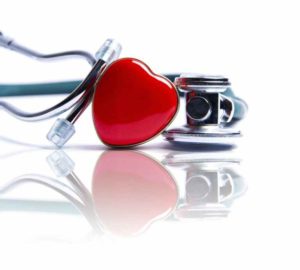Lower blood pressure should be a priority for women over 50. High blood pressure is considered one of the risk factors concerning heart disease. Unfortunately, most people go about their typical businesses and lives without realizing they suffer from high blood pressure (aka hypertension). This situation contributes to the ever-rising cases of heart attacks and stroke.
For women, this is especially dangerous because heart attacks happen to women with little to no warning. These silent symptoms of an impending heart attack can be lethal.
Though hypertension can be treated or managed with medications, you also have the power to lower your blood pressure, in many cases. This is done by observing a healthy diet and engaging in healthy practices like regular exercise.
Lower Blood Pressure by Following These American Heart Association Guidelines
Below, you will find some of the best eating practices, as recommended by the expert researchers at the American Heart Association.

1 – Lower Blood Pressure by Eating Fresh Vegetables and Fruits
Vegetables are a good source of nourishment for blood pressure management, considering their nutrient-rich nature. In fact, vegetables like broccoli and sweet potatoes contain potassium. This is vital for the regulation of your blood pressure as well as stress and anxiety reduction.
In a blood pressure-lowering diet, vegetables are also rich in fiber. This is essential in reducing blood pressure as well as inflammation. The water in these vegetables also helps to curb dehydration.
Fruits and vegetables essentially contain minerals, vitamins, fiber, and antioxidants that help protect against heart attacks and stroke. They’re naturally low in sodium. This means they’re a healthy and natural way to ensure your blood pressure is checked.
2 – Decrease Your Sodium
If you have hypertension, you should be following a low-sodium diet. Don’t add salt during cooking. Indeed, you get all the sodium you need in consuming ready-made or packaged foods. This doesn’t mean you must sacrifice flavor. Opt for salt-free seasoning blends to give your recipes sassy seasonings to please your taste buds.
3 – Lower Blood Pressure by Consuming More Whole Grains
Whole grains are rich in nutrients such as fiber, magnesium, potassium, selenium, iron, and folate—which all work together to keep you from developing a high blood pressure condition.
Whole-grain foods include barley, buckwheat, brown rice, and oatmeal. Incorporating these foods into your daily diet is one of the most effective ways to manage your blood pressure. Note that this also applies to the people already living with hypertension.
Remember to always stay on the lookout for the “whole grain” phrase as you shop for bread or cereals. While you read the label, ensure you find a low sodium content.
4 – Reduce Your Consumption of Fast Foods and Junk Foods
You obviously don’t want to believe everything you hear, but attention to detail is mandatory for fighting hypertension. Eat only foods that are beneficial to your health!
Most fast foods are high in saturated and trans fats—which are responsible for high blood cholesterol levels. This combined with high sodium intake (which is known to be the major contributor to hypertension) increases your chances of a heart attack or stroke.
Consider cutting down on your junk food intake (including foods like chips and cookies) or totally avoid them. But why? These foods are known to cause obesity. This is a significant risk factor for hypertension.
5 – Don’t Forget to Increase Your Water Intake
Drinking adequate water in a day has numerous health benefits. These include enhancing your overall body’s functions. Besides keeping you hydrated, water also helps maintain your normal blood pressure by lowering it down (in case it shoots up) and raising it to normal levels in case of a fall.
Therefore, making water your companion is one of the best and easiest ways to lower blood pressure. Besides the recommended eight glasses a day, consider having sips during your day.
Note that dehydration can lead to hypertension because a lack of water in the body cells will automatically trigger vasopressin secretion. Vasopressin is responsible for the constriction of blood cells. This leads to hypertension.
Final Thoughts on Lowering Your Risk of Heart Attack or Stroke by Proper Diet
Many people fail to realize that they suffer from hypertension until they suffer a heart attack or stroke. However, some may notice severe and persistent headaches, nosebleeds, dizziness, or lightheadedness. However, these symptoms primarily manifest in the condition’s advanced stages.
Ensuring a diet that fosters lower blood pressure is the surest ways to ensure you live a healthy lifestyle. You have control over the foods you eat. Make wise choices!
Start by observing the above measures and have regular health screenings to ensure everything is checked. Check with your doctor for more guidance and to monitor your health.


